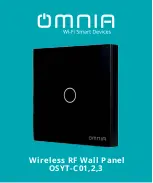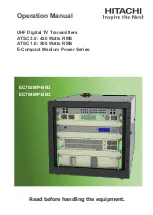
Document version 1.1 Page | 1
1017 WSPR TX Mini Low pass filter build
Instruction.
On the left the WSPR TX Mini as it comes delivered without a LP filter mounted - on the right with a filter
The WSPR TX Mini (product number #1017) has an unpopulated space for an output low pass filter.
This build instruction will guide the user in building and soldering the low pass filter.
Background.
The low pass filter removes the overtones from the generated RF square wave and makes the transmitter
compliant to use on one amateur band.
The user will pick what band to use and will build the filter for this band.
The filter is made up of four capacitors and three inductors. The inductors are constructed using toroidal cores
and copper wire. The capacitors are surface mount and are soldered on top of the board.
The Low Pass filter is a separate product and comes in a separate bag with product number #1021.


































